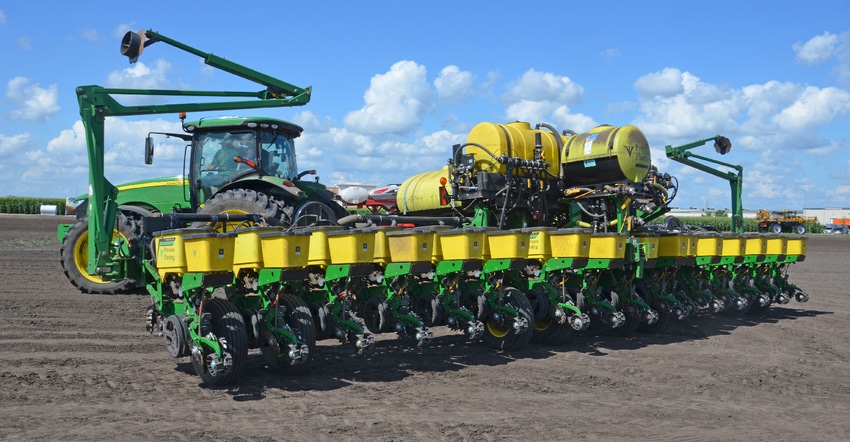
If you could only make one investment in your planter, what should it be? Ajay Sharda, an Extension ag engineer at Kansas State University, says the first two places to look are adding hydraulic downforce or electric seed meters.
“Installing electric seed meters turns a 24-row planter into 24 one-row planters, and that’s a good thing,” he says. “Each row can act independently, and the rpm of the meter on each row can change to match planter speed.
“That helps provide turn compensation, which means each row plants at the correct seeding rate on contours or turns. In many fields, turn compensation will help on many more passes than you might think.”
However, Sharda told Willie Vogt, host of a discussion on planter upgrades during the Farm Progress Virtual Experience, that hydraulic downforce is also extremely important. “That’s because of variability in conditions where each row runs,” Sharda said. “We’ve progressed from static springs to pneumatic downforce to hydraulic downforce. Hydraulic downforce is making a big difference in ensuring that seeds are placed near target depth in each row all the time.
“Static springs do a good job, but they can’t adjust as conditions change,” Sharda said. “If there isn’t enough downforce on a row, seed may be placed too shallow, affecting uniformity of emergence.”
Catch the entire discussion between Vogt and Sharda at fpvexp.com. Click on “Sessions” and then “Day 2.”
What results say
Based on his data, Sharda would look strongly at investing in hydraulic downforce, and then electric meters as soon as possible. There are multiple hydraulic downforce systems, and adjusted correctly, each one is effective, he observes.
Sharda found a yield advantage for systems that allow each row to adjust and meet a set down pressure goal. “Our results indicate that a grower could pay back his investment in hydraulic downforce in two years, and perhaps one year if he has lots of acres,” Sharda says.
Sharda discovered that in their farm-sized field trials where they use hydraulic downforce, nearly all seedlings emerge within three days. “We’ve also found that even if they emerge within four days, by V5 or V6, they catch up,” he says. “If all seedlings emerge within that window, you will be in good shape.”
This year, Sharda and his team will look more closely at the appropriate down-pressure setting to obtain the best results. So far, they’ve been successful at down-pressure settings of 220 pounds in most situations. They will continue evaluating settings in the 120- to 220-pound range in different conditions to better advise farmers how to set these systems correctly.
Beck’s has looked at the advantage of proper downforce in their Practical Farm Research studies over the past two years at multiple locations. Jason Gahimer, PFR manager, notes that they’ve seen from nearly a 2-bushel increase to over a 3-bushel increase for using the automated DeltaForce hydraulic down-pressure system from Precision Planting, versus manual settings in corn. The difference depends on the setting. They’ve also seen similar but slightly smaller yield increases in soybeans in a two-year, multiple location study. These are in plots. Gahimer expects even larger differences in real fields.
“Because our plots are generally flat and uniform, it’s not surprising to see minimal yield differences,” he says. “We would expect fields with soil and topography changes to elicit bigger responses.”
About the Author(s)
You May Also Like




